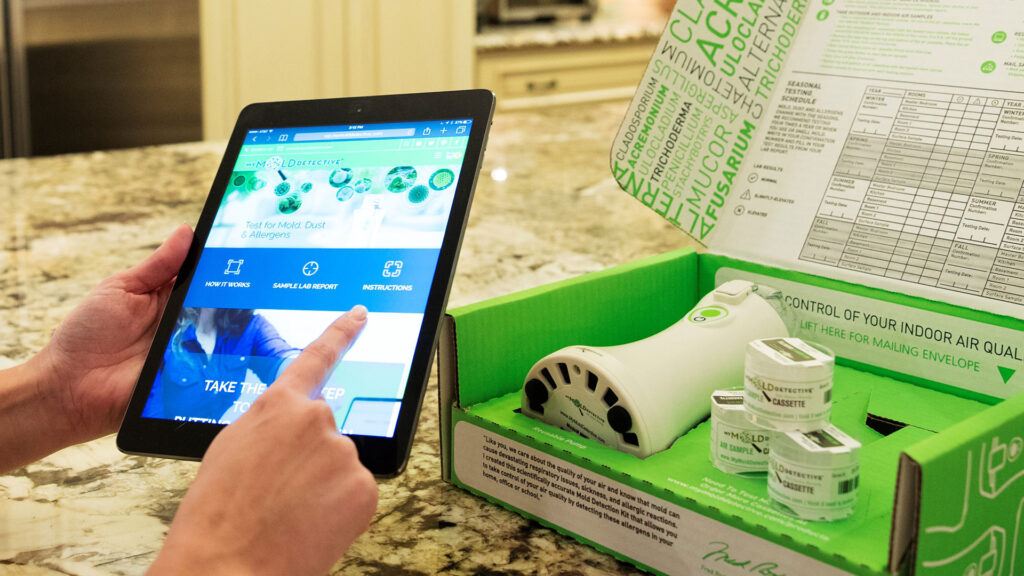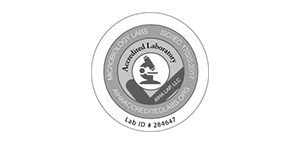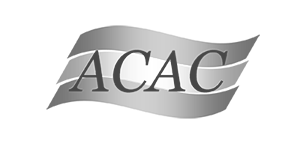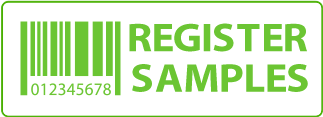
Is There a Tool to Detect Mold in Walls? Find Out How
Are you concerned about the possibility of mold lurking inside your home’s walls? This hidden threat can cause numerous health issues and lead to structural damage if left untreated. To help protect your home and family, it’s essential to be aware of the tools available for detecting mold within walls.
One of the most efficient ways to detect mold is using moisture meters, which can identify areas with excessive moisture, where mold is likely to grow. Furthermore, there are mold test kits available on the market, allowing you to take samples from various areas in your home for laboratory analysis. By understanding the different tools and techniques for mold detection, you can take appropriate measures to safeguard your living environment and ensure optimal air quality.
Why Mold Detection is Essential
Mold detection is essential in maintaining a healthy and safe living environment for you and your family. Unchecked mold growth can lead to various health problems, including allergies, respiratory issues, and even more severe complications in people with weakened immune systems.
Having the ability to detect mold early on can help you address the issue quickly, reducing its impact on your health and preventing any potential structural damage to your home. Mold thrives in damp conditions, so moisture control is key in preventing mold growth. Using a moisture meter can help you keep tabs on the humidity levels in your home, and address any issues before they become a breeding ground for mold.
When it comes to detecting mold, visual inspections are a vital first step. Check for damp areas on your drywall and look for watermarks, particularly near the bottom of walls where moisture is more likely to accumulate due to gravity. When signs of mold are present but not easily visible, using mold detection methods like air sampling and surface sampling can help you determine whether mold is present and the extent of the problem.
By staying vigilant and using tools to detect mold in your walls, you can prevent damage to your home’s structure and ensure a healthier living environment for you and your family.
Common Signs of Mold in Walls
Mold can be a hidden problem in your home, lurking behind walls and causing potential health issues. As a homeowner, it’s crucial to know the common signs of mold in walls, so you can address the issue before it becomes a significant problem. In this section, we will highlight the main indicators that mold may be present in your walls.
A strong, musty smell is often the first sign of mold. Your sense of smell is a powerful tool in detecting mold, as you can often smell mold before you can see it. If you notice a musty odor in a particular area of your home, there’s a good chance you have mold lurking nearby. To further investigate, you can try smelling electrical outlets in that area.
Discoloration and water stains on walls or baseboards can also indicate mold. These stains may appear yellow or brown in color, as mentioned by Mold Help For You. If you spot any of these visual signs, it’s essential to take action before the mold spreads further.
Leaking pipes and roofs are common sources of moisture that contribute to mold growth. According to remgroupinc.com, leaks in your roof, like pipes leaking in the attic, can remain hidden until mold has already developed. Regularly check your attic and ceilings for any signs of water damage, especially if you’ve recently experienced heavy rainfall or storms.
In addition to these signs, developing respiratory problems, such as allergies, asthma, or difficulty breathing, could indicate the presence of mold in your home. Mold spores can irritate the respiratory system and exacerbate pre-existing conditions.
In conclusion, familiarize yourself with the common signs of mold in walls: musty odors, discolorations, water stains, and respiratory issues. By taking a proactive approach, you can address mold problems promptly and maintain a healthier living environment in your home.
Professional Mold Detection Methods
When dealing with mold in your walls, it’s essential to use effective and accurate detection methods. This section will outline three professional mold detection techniques: Infrared Thermography, Moisture Meters, and Air Sampling.
Infrared Thermography
Infrared thermography, or thermal imaging, is a non-invasive technique that utilizes infrared cameras to identify temperature variations in your walls. These temperature changes may indicate the presence of moisture, which can support mold growth. By examining the infrared images, you can identify potential problem areas in your walls that may warrant further investigation or mold remediation.
Moisture Meters
Moisture meters are handheld devices that measure the moisture content in your walls. They can detect both surface moisture and moisture within the wall cavities. When using a moisture meter, you’ll probe the wall or press the meter against it. Higher than normal moisture levels may indicate a mold problem within the wall. These devices help you pinpoint areas of concern, making it easier to determine the source of the moisture and address any underlying issues.
Air Sampling
Air sampling is a method that involves collecting air samples from the environment and analyzing them for the presence of mold spores. This technique can detect mold in walls by comparing indoor air samples with outdoor air samples. If mold spore counts are higher indoors than outdoors, it may indicate a mold problem in your walls or other areas of your home. Air sampling is typically performed by trained professionals using specialized equipment.
By employing these professional mold detection methods, you can successfully identify and address mold issues in your walls. Each technique offers unique advantages, and a combination of these methods may provide the most comprehensive assessment of your home’s mold situation.

DIY Tools for Mold Detection
Detecting mold in your walls can be a crucial step in maintaining a healthy living environment. Here are some methods you can use to detect mold in your walls.
Visual Inspection
It’s important to start with a visual inspection of your walls. Look for any discolored spots, cracks, or signs of excess moisture, as these can be indicators of mold growth. Using a flashlight can help to identify potential problem areas, especially in darker corners or closets. Keep in mind that while visual inspection is helpful, it may not always reveal hidden mold growth behind walls or other obscured areas.
Mold Testing Kits
A more reliable method to detect mold in walls is using mold testing kits. These can be purchased easily online on our site, and they typically come with easy-to-follow instructions. Some kits require you to take a surface sample, while others involve testing the air quality for mold spores.
When using a mold testing kit, make sure to follow the manufacturer’s guidelines and carefully document your findings. The results may not be instant, as many kits require you to send your samples to a professional lab for analysis. Once you receive the results, you can take the necessary steps to remediate any mold growth issues in your home. It’s essential to address mold problems promptly to protect your health and prevent structural damage to your property. Our at home mold test kit is affordable and easy to use.
Prevention and Remediation
Controlling Humidity
To prevent mold growth in your home, it is vital to control the humidity. Mold thrives in moist conditions, so maintaining a relative humidity below 60% can discourage its growth. You can monitor humidity levels using a hygrometer, which is an affordable and easy-to-use tool. If you find that your indoor humidity is consistently above 60%, consider investing in a dehumidifier to help reduce moisture levels.
Another way to control humidity is by fixing any leaks or sources of dampness. Inspect your home for any damaged plumbing, roof leaks, or faulty appliances that may be contributing to the problem. Promptly repair any issues you find to minimize the risk of mold growth.
Proper Ventilation
Proper ventilation is essential for preventing mold and maintaining a healthy indoor environment. Ensure that air is circulating effectively throughout your home, especially in moisture-prone areas like bathrooms, kitchens, and basements. You may want to install exhaust fans or vents in these rooms to help remove excess moisture and improve air circulation.
In addition to installing ventilation systems, you can also improve airflow by keeping doors and windows open (when weather permits) and utilizing ceiling or floor fans. Additionally, avoid overcrowding your living spaces, as clutter can reduce air circulation, making it easier for mold to grow.
By controlling humidity and ensuring proper ventilation, you can effectively prevent and remedy mold problems in your home. Remember, taking preventive measures and addressing issues promptly is crucial in minimizing mold risk and maintaining a healthy living environment.
Detecting Mold in Your Walls
Detecting mold in your walls can be tricky, but there are various methods at your disposal. You can start by investigating any musty odors in your home. This could indicate the presence of mold and be a sign to inspect further CertainTeed.
To test for a possible mold problem, you may want to look for any visible signs such as water damage, discoloration, or mold growth on walls and ceilings. You should also be on the lookout for any signs of leaks in your walls or roof, as these can contribute to mold growth Family Handyman.
Keeping your home well ventilated can help reduce mold growth. Ensure that you maintain proper humidity levels as molds thrive in damp environments. Molds are generally not a problem indoors unless they find a wet or damp spot to grow US EPA.
In some cases, hiring a professional mold inspector or remediator might be the best course of action. They can determine the extent of the mold issue and recommend appropriate methods for mold removal. Remember that mold can have negative impacts on your health, especially if you have allergies or respiratory issues.
By being proactive and vigilant in detecting mold, you can protect your home and your health from potential harm.







